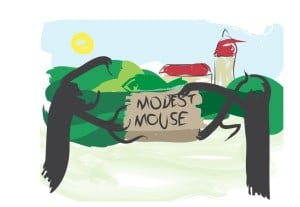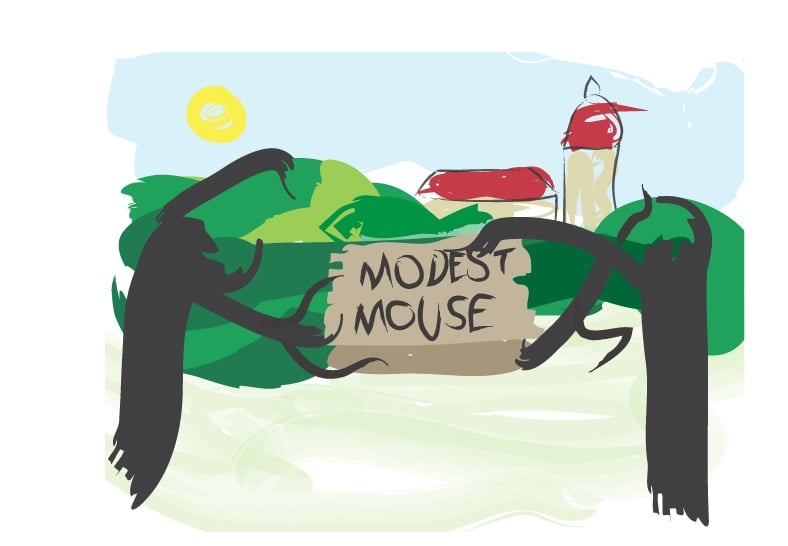At the heart of campus, there lies a hidden sloping field of wide grassy steps surrounded by verdant vegetation so tall and thick that if it weren’t for the distinctive Hoover Tower nearby, you might forget you are in the center of Stanford’s campus.

The 20-acre field narrows slightly as it dips into a stone uprising at its bottom, where musical performances take place. This outdoor arena is known as Laurence Frost Amphitheater, and strangely enough, hardly anything has been played from its stage in the last two decades.
Frost wasn’t always silent, however. As many current Stanford students now lament, it was once the annual stomping ground of the Grateful Dead, just one of many popular bands to visit the amphitheater. But the frequent visits of The Dead caravan were not Frost’s only highlight.
The amphitheater was built in 1935 with funds donated by the parents of John Laurence Frost ’35, who died of polio soon after his graduation from Stanford. From 1938 to 1984, it served as the location for Stanford’s commencement ceremonies.
“All of my commencement exercises were held there,” recalled Steve Stathatos ’74. “It was an ideal time of year for the venue<\p>–<\p>warm weather and all the foliage in full display. As I recall, various flowering trees like cherry and apple surrounded the place, and red and white roses bloomed around the stage.”
Although the amphitheater was originally used only for University ceremonies, it soon found use as a concert venue for jazz artists and classical productions. Duke Ellington and Ella Fitzgerald played together at Frost for students, as well Louis Armstrong and even Miles Davis.
As popular music shifted genres in the late 1960s, Frost was visited by a new era of musicians. On May 7 1967, Jefferson Airplane became the first major rock band to perform at Frost, just as they were reaching international stardom. Many other musicians followed, including Eric Clapton, Carlos Santana, Ray Charles and Creedence Clearwater Revival.
The stage was a favorite of the Grateful Dead, who returned to the venue a total of 12 times. Their continued dedication was due in part to the fact that they themselves were from the Bay Area, but it has also been attributed to their fondness for the venue.
Frost Amphitheater is not only surrounded by nature but is also composed of it; the audience stands on ascending grass flats that curve upward from the performers like an upturned band shell, creating tremendous acoustic delivery.
“Frost, at its best, is an unbeatable venue,” Stathatos said.
After an unfortunate turn of events including a motorcycle gang brawl at an Elvin Bishop concert in 1971, the venue began its slow cycle into disuse. With the growing costs of concerts in combination with Frost’s lack of infrastructure, fewer and fewer productions were held at Frost over the years.
Today, Frost is rarely visited. In the last five years, the only notable performances have been Grammy award-winning bassist Victor Wooten and rapper Mos Def.
However, the silence at Frost will not last long.
On May 19, Stanford will host the Frost Revival Music and Arts Festival, an all-day event that will fill Frost with Stanford students and members of the general public.
This seems like an unexpected shift in the University’s mentality toward Frost’s use, but according to Stanford Concert Network (SCN) co-director Alberto Aroeste ’12, the Stanford administration is largely supportive of their efforts.
The lack of infrastructure is still a problem, but with a lot of work and proper funding, the event will have full facilities and services for performers and guests.
Emily Pollock ’13, SCN co-director, notes that despite the beauty of Frost, it remains a difficult venue to work with.
“What you see is really what you get — a concrete stage and lawn<\p>–<\p>an awesome environment, but it’s hard to get all of the necessary equipment out there,” she said.
The physical set-up of the concert may no longer be an issue, but Stanford is now more concerned with selling all 6,000 tickets, which will be available to Stanford students for $20. But with headliner Modest Mouse and openers Benjamin Francis Leftwich and Eyes Lips Eyes, it is likely that the group will have little trouble selling tickets.
“I’m not worried about ticket sales since this event holds so much intrinsic value to students and the general public,” Aroeste said. “We’re very excited to bring back Frost in a big way and have students experience the venue — some for the first time — in the way it was meant to be experienced.”
And what does this mean for the future of Frost?
“We hope that new generations of students and the general public will start appreciating Frost as SCN and older generations of Bay Area residents and alumni do,” Aroeste said.
With this newfound appreciation, perhaps there will be more than just the sounds of crickets — and other wildlife — coming from the amphitheater in coming years.
